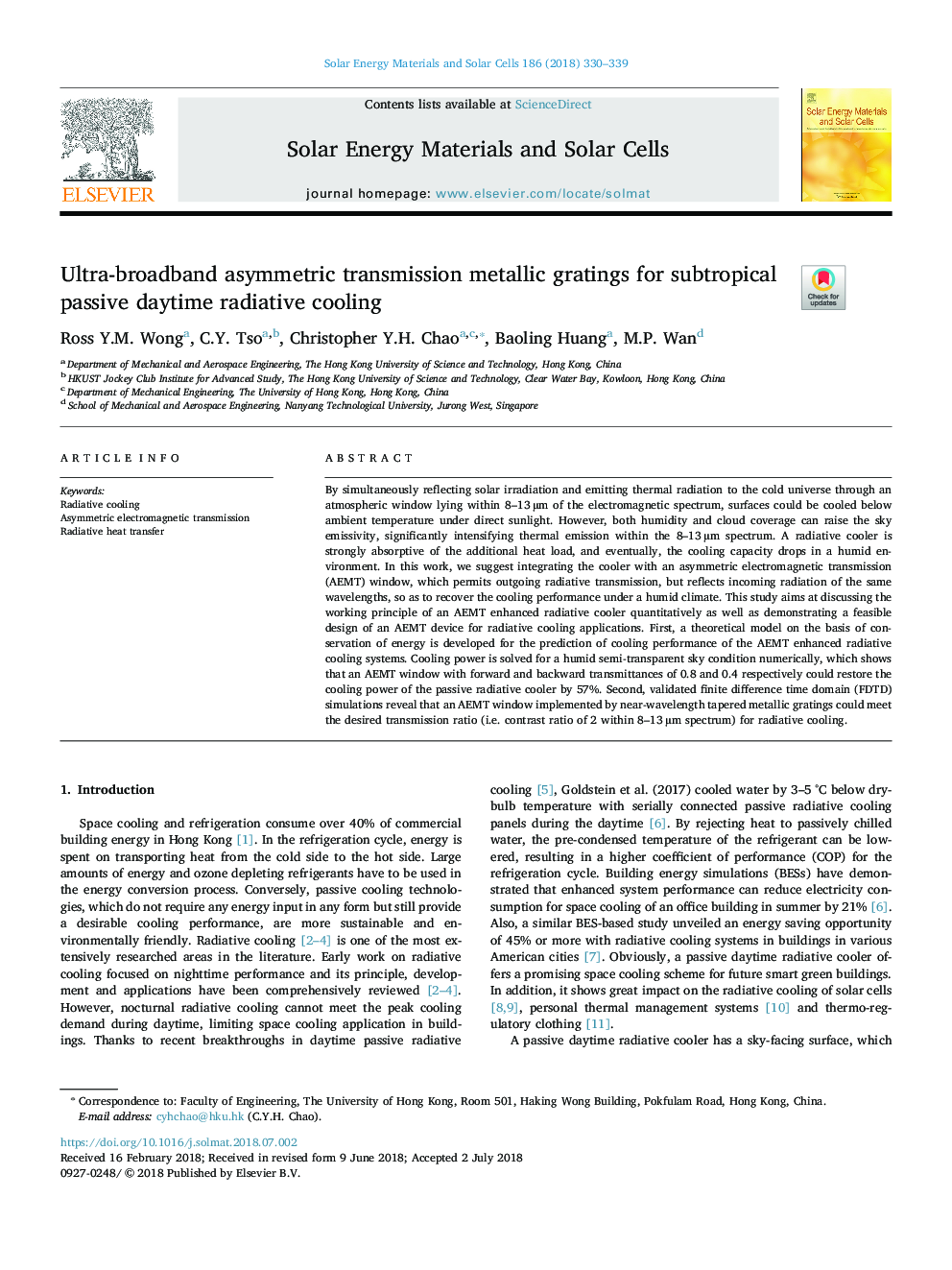| Article ID | Journal | Published Year | Pages | File Type |
|---|---|---|---|---|
| 6533866 | Solar Energy Materials and Solar Cells | 2018 | 10 Pages |
Abstract
By simultaneously reflecting solar irradiation and emitting thermal radiation to the cold universe through an atmospheric window lying within 8-13â¯Âµm of the electromagnetic spectrum, surfaces could be cooled below ambient temperature under direct sunlight. However, both humidity and cloud coverage can raise the sky emissivity, significantly intensifying thermal emission within the 8-13â¯Âµm spectrum. A radiative cooler is strongly absorptive of the additional heat load, and eventually, the cooling capacity drops in a humid environment. In this work, we suggest integrating the cooler with an asymmetric electromagnetic transmission (AEMT) window, which permits outgoing radiative transmission, but reflects incoming radiation of the same wavelengths, so as to recover the cooling performance under a humid climate. This study aims at discussing the working principle of an AEMT enhanced radiative cooler quantitatively as well as demonstrating a feasible design of an AEMT device for radiative cooling applications. First, a theoretical model on the basis of conservation of energy is developed for the prediction of cooling performance of the AEMT enhanced radiative cooling systems. Cooling power is solved for a humid semi-transparent sky condition numerically, which shows that an AEMT window with forward and backward transmittances of 0.8 and 0.4 respectively could restore the cooling power of the passive radiative cooler by 57%. Second, validated finite difference time domain (FDTD) simulations reveal that an AEMT window implemented by near-wavelength tapered metallic gratings could meet the desired transmission ratio (i.e. contrast ratio of 2 within 8-13â¯Âµm spectrum) for radiative cooling.
Related Topics
Physical Sciences and Engineering
Chemical Engineering
Catalysis
Authors
Ross Y.M. Wong, C.Y. Tso, Christopher Y.H. Chao, Baoling Huang, M.P. Wan,
